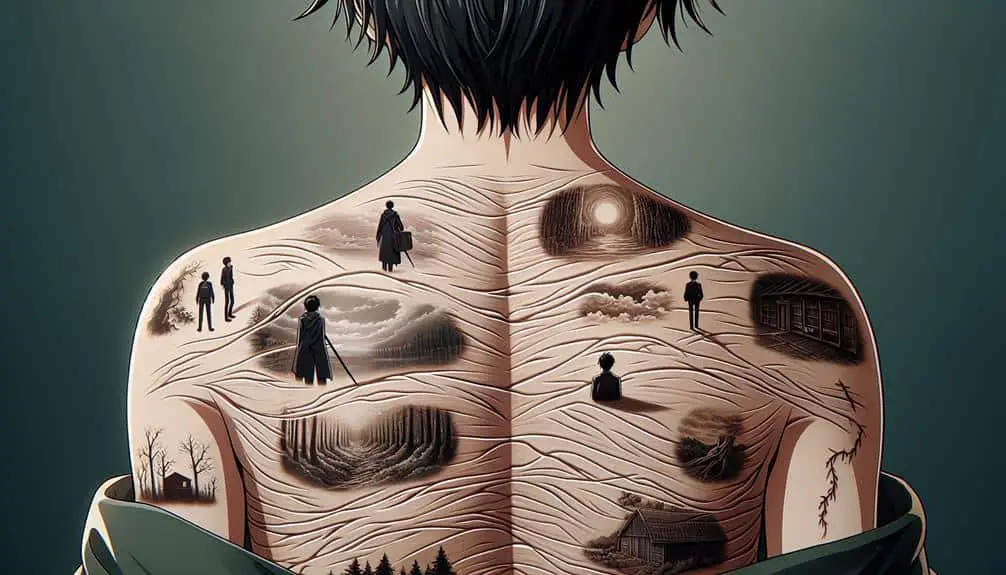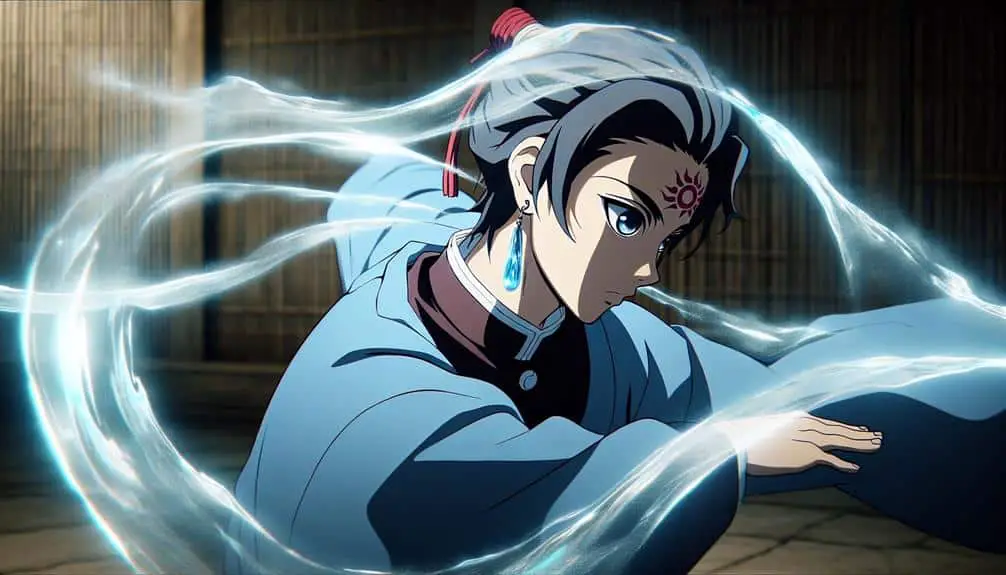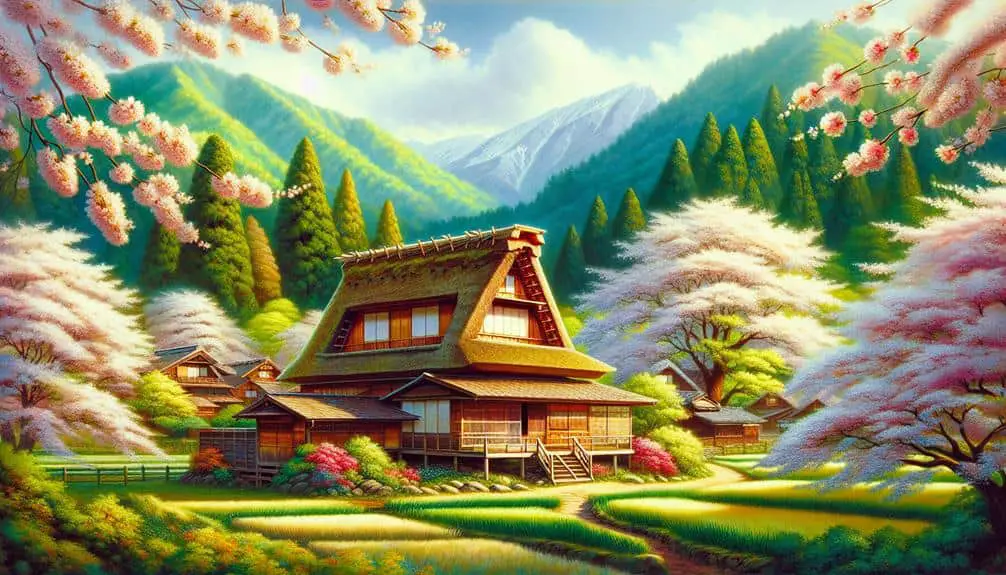Enter the world of Demon Slayer's Hashira, where each Pillar symbolizes strength, unity, and resilience. Elemental symbolism intertwines with their essence: fire for passion, water for adaptability, wind for freedom, earth for stability, and lightning for power. Animal motifs add layers of meaning, reflecting unique traits and abilities. Colors in their robes echo Japanese symbolism, amplifying their characteristics. Leadership dynamics shape their collective strength, with essential being crucial for combat. Each Hashira brings a unique skill set, embodying guidance and mentorship. Immerse yourself in this intricate tapestry and unravel the deeper meanings woven within.
Key Points
- Animal motifs embody unique traits.
- Elemental symbolism reflects Hashira abilities.
- Color symbolism enhances character characteristics.
- Hashira serve as pillars of strength.
- Leadership and unity crucial for Corps.
Hashira as Pillars of Strength
Hashira in Demon Slayer serve as the unwavering pillars of strength within the Demon Slayer Corps, embodying resilience and determination in the face of overwhelming adversity. These elite warriors epitomize unity and camaraderie, standing as beacons of hope for their comrades in times of crisis. Their unwavering dedication to the cause fosters a deep sense of trust and reliance within the Corps, creating a formidable force that's greater than the sum of its parts.
The Hashira's inner strength and determination are evident in their unwavering commitment to eradicating demons and protecting humanity. Each Hashira has overcome immense challenges and personal struggles to rise to their esteemed positions, showcasing a level of resilience that inspires those around them. Their resolve in the face of despair serves as a guiding light for younger members of the Corps, instilling a sense of purpose and determination in all who follow their lead.
In essence, the Hashira represent more than just skilled warriors; they embody the values of unity, camaraderie, inner strength, and unwavering determination that are essential for the Demon Slayer Corps to fulfill its noble mission.
Elemental Symbolism in Hashira
The elemental symbolism present in the Hashira's abilities adds layers of depth and meaning to their characters and roles within the Demon Slayer universe. Each Hashira possesses a unique elemental power that not only reflects their individual strengths but also carries spiritual significance:
- Flame Hashira (Kyojuro Rengoku): The Flame Hashira embodies the element of fire, symbolizing passion, purification, and transformation in his relentless pursuit of justice.
- Water Hashira (Giyu Tomioka): The Water Hashira harnesses the element of water, signifying adaptability, healing, and tranquility as he navigates the ebb and flow of battle.
- Wind Hashira (Sanemi Shinazugawa): The Wind Hashira commands the element of air, representing freedom, swiftness, and intellect in his strategic combat approach.
- Stone Hashira (Gyomei Himejima): The Stone Hashira channels the element of earth, embodying stability, endurance, and protection as a pillar of strength for his comrades.
- Thunder Hashira (Tengen Uzui): The Thunder Hashira wields the power of lightning, symbolizing power, unpredictability, and electrifying energy in his flashy fighting style.
These elemental powers not only showcase the Hashira's combat prowess but also serve as metaphors for their personalities and the spiritual significance they bring to the Demon Slayer Corps.
Animal Motifs Among Hashira
Among the Hashira in Demon Slayer, animal motifs are intricately woven into their characters, adding layers of symbolism and meaning to their roles within the corps. Animal symbolism plays a significant role in Japanese culture, with each animal carrying specific connotations and characteristics. In the case of the Hashira, these animal motifs are carefully chosen to reflect the unique traits and abilities of each pillar.
Cultural influences heavily shape the animal motifs assigned to the Hashira. For example, Gyomei Himejima, the Stone Hashira, is associated with the ox, symbolizing strength, endurance, and unwavering determination. This choice aligns with Gyomei's unwavering dedication to his duty and his unyielding will.
Similarly, Mitsuri Kanroji, the Love Hashira, embodies the butterfly, symbolizing transformation, love, and femininity. The butterfly motif reflects Mitsuri's compassionate nature and her ability to adapt and evolve throughout her journey as a Hashira.
Through these animal motifs, the creators of Demon Slayer infuse deeper meanings into the characters of the Hashira, enriching the narrative with cultural symbolism and thematic significance.
Color Symbolism in Hashira Robes
Symbolism through colors is intricately embedded in the robes worn by the Hashira in Demon Slayer, adding depth and significance to their characters. The color choices in the Hashira robes aren't arbitrary; they carry cultural influences and historical significance that enrich the narrative of the characters and their roles in the series.
- Cultural Influences: The vibrant hues of the Hashira robes often reflect traditional Japanese color symbolism, connecting the characters to their cultural roots.
- Robe Designs: Each Hashira's robe design is unique and tailored to their specific abilities and personality traits, further emphasizing the individuality of each character within the group.
- Historical Significance: Some colors used in the Hashira robes have historical connotations, symbolizing virtues, emotions, or affiliations that align with the Hashira's roles.
- Color Choices: From calming blues to fiery reds, the color choices in the Hashira robes are deliberate and carefully selected to amplify the characteristics and strengths of each Hashira.
- Symbolic Meanings: The colors in the Hashira robes serve as visual cues, offering insights into the personalities and powers of these elite demon slayers.
Leadership and Unity in Hashira
Amidst the ranks of the Hashira in Demon Slayer, the dynamics of leadership and unity play a pivotal role in shaping their collective strength and effectiveness. Unity within the Hashira isn't only essential for combat but also for fostering trust and camaraderie among the members. Each Hashira brings a unique skill set and personality to the group, but it's their ability to work together towards a common goal that truly sets them apart.
Guidance is another vital aspect of leadership among the Hashira. The more experienced members often take on mentorship roles, imparting their knowledge and wisdom to the newer recruits. This not only guarantees the continuity of skills but also strengthens the bond within the group. Leading by example is a cornerstone of Hashira leadership. By demonstrating courage, dedication, and selflessness in battle, the Hashira inspire their comrades to do the same, creating a ripple effect of bravery and determination within their ranks.
Essentially, the Hashira exemplify how unity and guidance, coupled with leading by example, are fundamental in achieving success and cohesion within their elite group.




